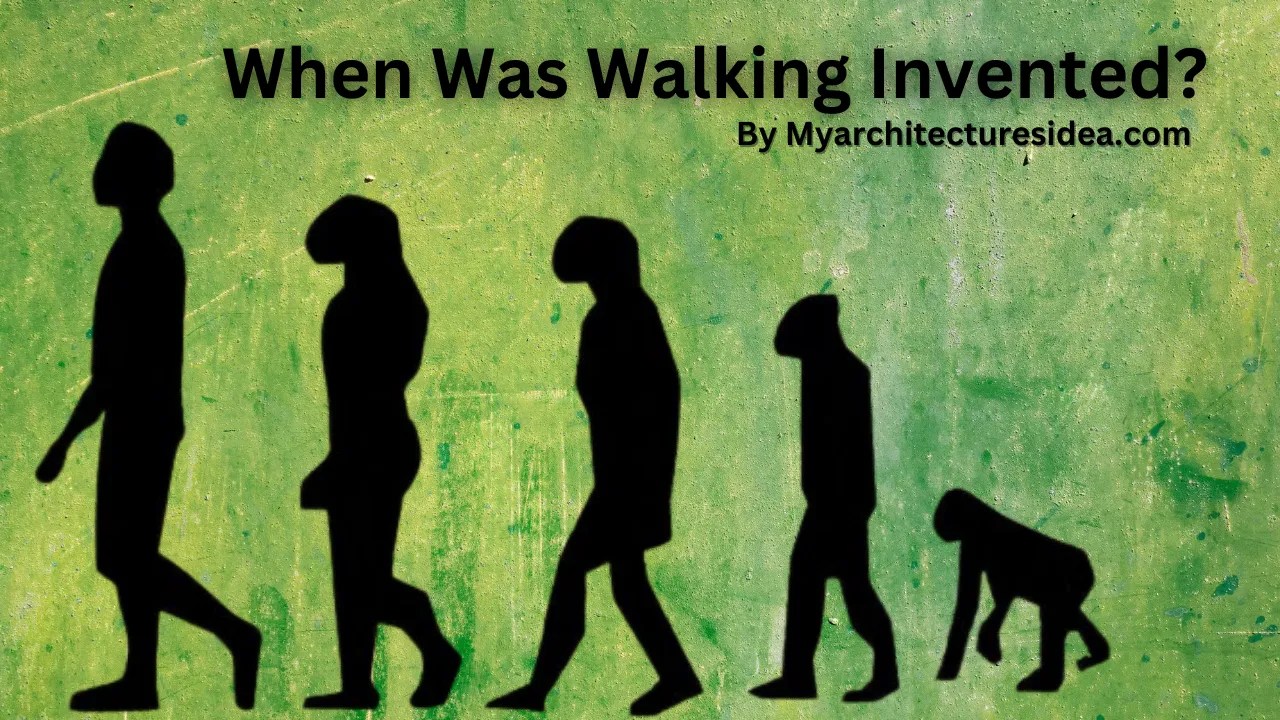Walking is one of the most fundamental and instinctual activities that humans engage in, yet its origins and the evolution of this skill are often overlooked. Understanding when walking was invented requires us to look back through the annals of human history, archaeology, and anthropology. In this article, we will explore the fascinating journey of walking, from its early beginnings to its significance in modern society. We will also delve into the biological, cultural, and technological factors that have shaped our ability to walk.
Walking is not just a simple act; it is a complex interplay of biomechanics and neurological processes that has evolved over millions of years. The invention of walking can be traced back to our ancestors, who adapted to their environments in unique ways. This adaptability has allowed us to traverse vast landscapes, discover new territories, and develop societies.
Join us as we embark on this enlightening exploration of when walking was invented, its historical context, and the scientific principles that underpin this essential human activity. Let’s uncover the milestones in the evolution of walking and its profound impact on human civilization.
Table of Contents
- Early Humans and Their Locomotion
- Biological Evolution of Walking
- Cultural Significance of Walking
- Technological Advancements in Walking
- Walking in Modern Society
- Health Benefits of Walking
- Walking and the Future
- Conclusion
Early Humans and Their Locomotion
The story of walking begins with our early ancestors, the hominins, who lived millions of years ago. Evidence suggests that bipedalism, or walking on two legs, emerged as a significant adaptation for survival.
Key points about early human locomotion include:
- Australopithecus, one of the earliest known hominins, exhibited both tree-climbing and bipedal traits.
- Fossil evidence indicates that the ability to walk upright developed around 4 million years ago.
- The shift to walking on two legs allowed early humans to cover greater distances in search of food and resources.
Evidence from Fossils
Fossils of early hominins provide invaluable insights into the evolution of walking. For instance, the famous Lucy skeleton (Australopithecus afarensis) showcases features indicative of bipedalism, such as the structure of the pelvis and leg bones.
Biological Evolution of Walking
The evolution of walking is not only a cultural phenomenon but also a biological one. Our anatomy has adapted over time to facilitate this essential activity.
Several key adaptations include:
- The formation of an arched foot, which provides stability and shock absorption.
- The alignment of the pelvis and spine, allowing for an upright posture.
- Development of strong leg muscles, essential for endurance and mobility.
Neurological Developments
The ability to walk is also closely linked to neurological advancements. The human brain has evolved to coordinate balance and movement, crucial for effective walking.
Cultural Significance of Walking
In addition to its biological aspects, walking holds cultural significance across various societies. It has been a means of transportation, a form of exercise, and a social activity.
Walking plays a critical role in:
- Cultural rituals and traditions, often symbolizing journeys or transitions.
- Community-building, as walking encourages social interaction.
- Religious practices, such as pilgrimages, which are deeply rooted in walking.
Technological Advancements in Walking
As societies progressed, technological advancements have transformed the way we walk and navigate. Innovations in footwear, mobility aids, and urban planning have significantly impacted walking.
Important technological developments include:
- The invention of shoes, which protect the feet and enhance comfort.
- Mobility devices like walkers and canes, aiding those with mobility challenges.
- Urban design that promotes walkable communities, enhancing accessibility.
Walking in Modern Society
Today, walking remains an integral part of human life. It is not only a means of transportation but also a vital aspect of health and wellness.
Walking in modern contexts includes:
- Urban commuting, where walking is often part of public transportation usage.
- Recreational walking, including hiking and walking clubs that promote fitness.
- Environmental awareness, as walking reduces carbon footprints compared to driving.
Health Benefits of Walking
Walking has numerous health benefits that contribute to overall well-being. Regular walking can lead to:
- Improved cardiovascular health and reduced risk of chronic diseases.
- Enhanced mental health, reducing symptoms of anxiety and depression.
- Weight management and increased physical fitness.
Walking and the Future
As we look to the future, the role of walking in society will continue to evolve. Emerging trends include:
- Smart city initiatives that prioritize pedestrian-friendly infrastructure.
- Wearable technology that tracks walking habits and promotes fitness.
- Increased focus on sustainable living, where walking becomes a preferred mode of transport.
Conclusion
Walking, an activity that may seem simple, has a rich history intertwined with human evolution, culture, and health. From our early ancestors to modern society, the act of walking has profoundly shaped our lives. As we continue to advance technologically and culturally, walking will remain a fundamental aspect of human existence.
We invite you to reflect on your walking habits and consider incorporating more walking into your daily routine. Share your thoughts in the comments below or explore other articles on our site about the fascinating connections between human activity and health.
References
- Hawkes, K., & Blume, L. (2017). The Evolution of Human Walking. Journal of Human Evolution.
- Lieberman, D. E. (2013). The Evolution of the Human Head. Harvard University Press.
- Wells, J. C., & Stock, J. T. (2007). The Evolution of Human Bipedalism. Anthropological Review.
Mikki Mase: The Rising Star In The Digital Space
Tudor Period: A Deep Dive Into The Era Of Change And Transformation
Leana Deeb: The Rising Star Of Social Media


